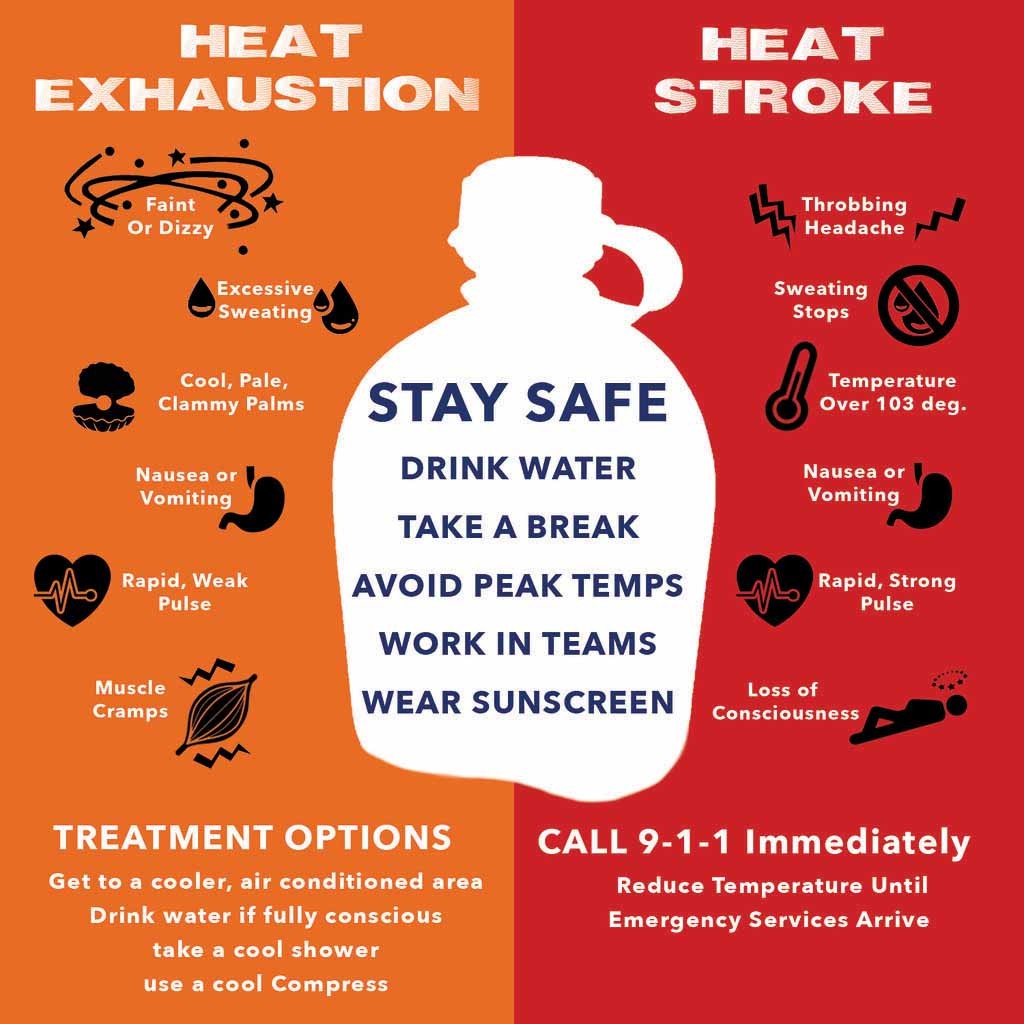The human body’s resilience is remarkable, but its dependence on water and food is undeniable. The question of “How Long Can You Last Without Food Or Water” is a complex one, with answers varying based on individual circumstances and environmental factors. While the general rule of thumb suggests we can survive approximately three days without water and three weeks without food, these are broad estimations. Let’s delve deeper into the factors affecting survival time without these essential elements.
The consensus is that humans can typically survive for around three days without water, although estimates range from two days to a week. Wilderness guides often use the “rule of 3,” which states that a person can live for 3 minutes without air, 3 days without water, and 3 weeks without food.
A peer-reviewed international journal, Nutrition Reviews, published two articles in 2010 that mentioned how long people can go without water. One article states “only for days,” while the other indicates 2-4 days. Dr. Claude Piantadosi from Duke University suggests that 100 hours is approximately the limit. Without water, death can occur after 3 days, and survival beyond 5-6 days is rare.
The world record for survival without water and food is 18 days, set by an 18-year-old in Austria who was accidentally locked in a government facility in 1979. He was in critical condition upon discovery.
These figures are merely guidelines. Numerous factors, including environment, activity level, age, health status, and individual characteristics, impact survival time without water.
While food contains some water, its quantity varies depending on the type of food. Surviving without water usually refers to abstaining from drinking water or other beverages.
Factors Influencing Survival Time Without Water
Several factors determine how long a person can survive without water.
Environmental Factors
The surrounding environment significantly impacts hydration levels.
Temperature
Dr. Piantadosi notes that at average outdoor temperatures, a person can survive around 100 hours without water. Cooler temperatures extend survival time, while direct sunlight reduces it. During hot weather, dehydration poses a risk to individuals of all ages.
Humidity
High humidity hinders sweat evaporation, reducing the body’s ability to release heat effectively. This can lead to increased body temperature and potentially heatstroke.
Activity Level
The body requires less water during rest and more during exercise. Increased exercise intensity and duration raise body heat production and sweating, contributing to dehydration.
Age
Older adults have less water in their bodies, making them more susceptible to water loss from illness or medication. According to the Institute of Medicine, older adults are also more heat-intolerant due to decreased sweating capacity or aerobic fitness. Young children are also at greater risk of dehydration.
Health Status
Dehydration in young children often results from severe vomiting and diarrhea. These conditions can also lead to rapid dehydration in people of all ages. Fever and frequent urination, such as from uncontrolled diabetes, also increase dehydration risk.
Weight
The Centers for Disease Control and Prevention (CDC) identifies overweight individuals as being at greater risk during heat-related illnesses. Elevated heat levels are caused by a lack of water. People who weigh more generally need more water.
Gender
The U.S. National Academies of Sciences, Engineering, and Medicine recommends that women drink 2.7 liters of fluid daily, while men should drink 3.7 liters (may vary depending on the other factors listed here). Women require more water during pregnancy and breastfeeding.
Food Intake
Food contributes to overall water intake. Roughly 20% of daily fluid intake comes from food. Consuming foods high in water content, such as cucumbers, celery, iceberg lettuce, watermelon, and strawberries, impacts hydration status and survival time without drinking fluids.
Strategies to Improve Survival Chances Without Water
Several strategies can improve your chances of survival without drinking water:
- Minimize activity level: Avoid unnecessary energy expenditure and excessive sweating.
- Regulate body temperature: Maintain a comfortable temperature by staying warm in cold conditions and cooling off or seeking shade in hot weather.
- Travel smart: Plan travel during cooler times of the day, such as early morning.
- Eat foods high in water content: Consume easily digestible foods with high water content to support fluid intake.
- Avoid certain medications: Diuretic medications should be avoided as they increase urination.
- Strengthen your immune system: A strong immune system can help reduce the risk of illnesses that cause diarrhea and vomiting, which can quickly deplete body water.
Factors That Decrease Survival Chances Without Water
Certain factors can decrease your chances of survival without drinking water:
- Drinking alcohol: Alcohol increases urination, promoting dehydration.
- Expending too much energy: Higher energy expenditure requires more water to replenish losses.
- Eating too much food: The body uses water to digest food, which can worsen dehydration. Survival experts recommend eating as little as possible if water is unavailable.
- Eating snow: Eating snow can lower core body temperature and use energy and water to convert snow into water, promoting dehydration.
- Drinking seawater: Seawater has a high salt content that humans cannot process, leading to more thirst and dehydration.
- Staying at a high altitude: High altitudes increase urination and breathing and sweating rates, leading to greater fluid loss.
The Thirst Mechanism: When Do You First Feel Thirsty?
Thirst is triggered when the concentration of electrolytes in the blood rises by 2-3%. Receptors in the anteroventral hypothalamus of the brain sense changes in plasma osmolality (electrolyte concentration). Thirst signals that the body doesn’t have enough water.
As Unicef notes, thirst is one of the first signs of dehydration. If you’re thirsty, you’re already dehydrated.
The Role of Water in Food
Yes, easily digestible food high in water content helps with overall fluid intake when drinking water is restricted. Digesting fat is the most difficult and requires a lot of water. FEMA recommends avoiding salty foods as they can increase thirst.
Foods high in water content include cucumbers (95% water), celery (95%), iceberg lettuce (95%), tomatoes (95%), zucchini (nearly 95%), spinach (93%), cauliflower (92%), watermelon (91%), yellow melon (e.g. honeydew, 91%), strawberries (91%), and cantaloupe (90%).
The Impact of Dehydration on Body Functions
Dehydration significantly affects various bodily functions:
- Cognitive performance: Causes confusion, dizziness, and impaired focus.
- Mood: Leads to restlessness, agitation, tiredness, and mood swings.
- Physical function: Causes weakness and decreased physical performance.
- Waste elimination: Results in dark-colored urine, less urine volume, and constipation.
- Heart and lung function: Causes fast heart rate, low blood pressure, and fast breathing.
- Temperature regulation: Leads to fever.
- Digestion: Weakens the body’s ability to form saliva.
- Joints: Weakens the body’s ability to lubricate joints.
- Cell function: Weakens systems for cell growth, reproduction, and survival.
Risks of Dehydration
Dehydration risks include cognitive impairment and decreased productivity. Studies have shown that dehydration negatively impacts mental ability and work productivity.
Cognitive Impairment
Mental function decreases significantly when 2% or more of body weight is lost due to dehydration. Impaired functions include short-term memory, visual tracking, attention, and arithmetic ability.
Decreased Work Productivity
Dehydration can negatively impact worker productivity. Reaction times increase with worsening dehydration, and decreased water intake can reduce productivity by as much as 12%.
Body Water Percentage and Lifespan
A loss of 8% or more of body water can be fatal. The percentage of water in the body affects lifespan. Infants have about 75% body water, normal adults 70%, and older adults only 50%. Older adults are more sensitive to changes in body water. People with less fat tissue tend to have a greater percentage of body water than people with more fat tissue. Men generally have a greater percentage of body water than women, as women have a greater percentage of body fat.
A loss of 1-2% of body weight due to water is associated with decreased cognition; 4% loss is associated with decreased performance, headaches, tiredness, and irritability; and 8% loss or more is fatal.
Precautions When Water Access Is Restricted in Nature
When water access is restricted in nature, avoid searching in places where water does not naturally collect, avoid water pools with no green vegetation, and do not ration water over a long period.
Survival experts recommend looking in valleys where water naturally collects. Dig in areas of vegetation, or dry beds where streams used to be. Water may be found in crevices in the mountains, under sand dunes by the beach, or near vegetation on cliffs.
Be wary of pools without green vegetation (may contain toxic chemicals). Always boil water from pools before drinking. Drink the amount needed each day instead of rationing the supply. The average fluid intake should be close to 1.5 liters/day, supplemented with 1.5 grams of sodium chloride per day.
Water Intoxication (Drinking Too Much Water)
Water intoxication occurs when too much water is consumed, leading to decreased sodium concentration in the body (hyponatremia). Symptoms can range from mild to severe, with brain swelling, coma, seizures, muscle weakness, confusion, and tiredness being potential outcomes.
Neither too little nor too much water is ideal for the body. Maintaining a balanced approach to hydration is key to overall health and well-being.
Conclusion
The ability to survive without food or water is a complex interplay of factors. While general guidelines exist, individual circumstances and environmental conditions significantly influence survival time. Understanding these factors and implementing appropriate strategies can greatly improve your chances in situations where access to these essential resources is limited. Prioritizing hydration, regulating body temperature, and making informed choices about food and activity are crucial for maximizing survival potential.

